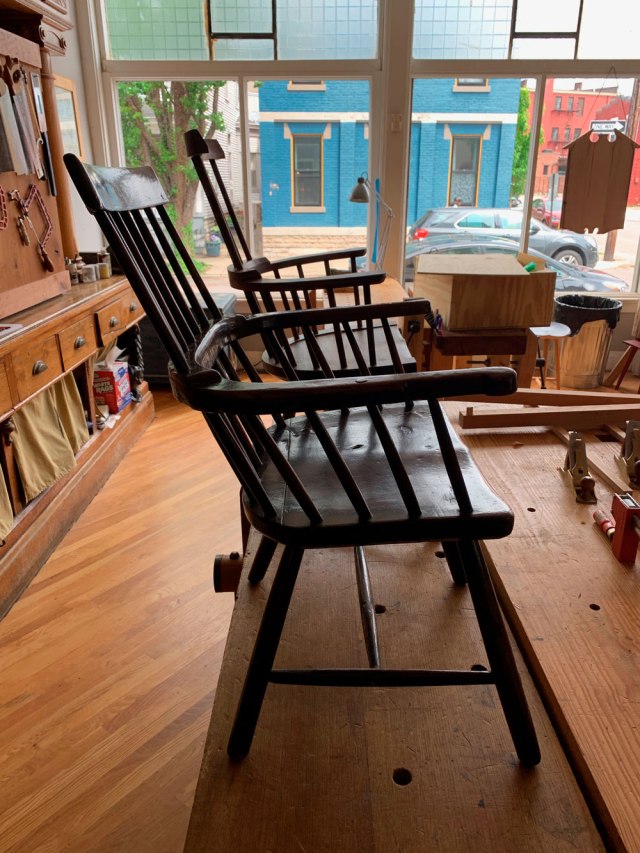
I’ve seen a lot of slideshows of people’s incredible, breathtaking and life-changing work.
For the first 50 years of my life, I watched and was inspired. Graceful furniture forms. Astonishing craftsmanship. Shimmering finishes. All of it made me say: I want to go there. And in my heart, I thought I could.
But something happened in my 50th year. I lost my father, a good friend and some other people I cared about deeply. And the slideshows took a turn in my mind. Instead of seeing what was possible, I saw what was out of reach. Perhaps I started too late. Maybe I don’t have the natural gifts. Or some such.
If you’re a therapist or a kind soul you might disagree. But the rest of us know that there is a certain grinding of the gears – a metal calculus – that says, “This is a hill you cannot climb.” So we spin our wheels at lower elevations and try to find somewhere interesting to steer the bicycle.
On my way home from Fine Woodworking LIVE, I was invited to visit the home and shop of John Porritt, a chairmaker and restorer who works in a picturesque barn behind his home in Upstate New York. On the shop floor in front of his neatly piled stacks of old timber, John had arrayed a handful of original Welsh, American and English chairs he’s collected during his career.
We spent a couple delightful hours examining them and discussing their merits and demerits. As we were leaving the barn to look at some chairs in his house, John said that he might be willing to sell a chair or two.
I froze in my tracks and pointed to the chair pictured at the top of this entry.
“Would you sell that one?” I asked. We shook hands on the price.

The chair is remarkable for a number of reasons I’ll will discuss in a later blog entry. But what struck me was how similar the antique chair’s angles were to my chairs. They look distantly related.
The big difference between the two chairs is the hand that made them. My chair is rather uptight in its craftsmanship. John said as much about my chairs, “You have the angles right, but the older chairs are looser.” It was merely an observation, he wasn’t trying to convince me to change.
“If your chairs are selling,” he said, “Then you are doing something right.”
But I see this as an area where I can grow. I am uptight and obsessive about my chairs. Even if I start with riven stock and work by hand, I fuss over every facet until the chair has a silhouette that is sharp, for lack of a better word. Can I loosen up? Not sloppiness, but an acceptance of the way that work progresses when it is shaped by hand. To allow it to happen instead of bending it to my will.
This week I have a vernacular Irish chair on my workbench. I’m building it in anticipation of a research trip to Ireland this fall for a book. The chair isn’t for a customer so there’s no one standing over the project and expecting a certain result.
Except for me, of course.
This afternoon I’ll take up my block plane to shape the legs and we’ll see what happens.
— Christopher Schwarz